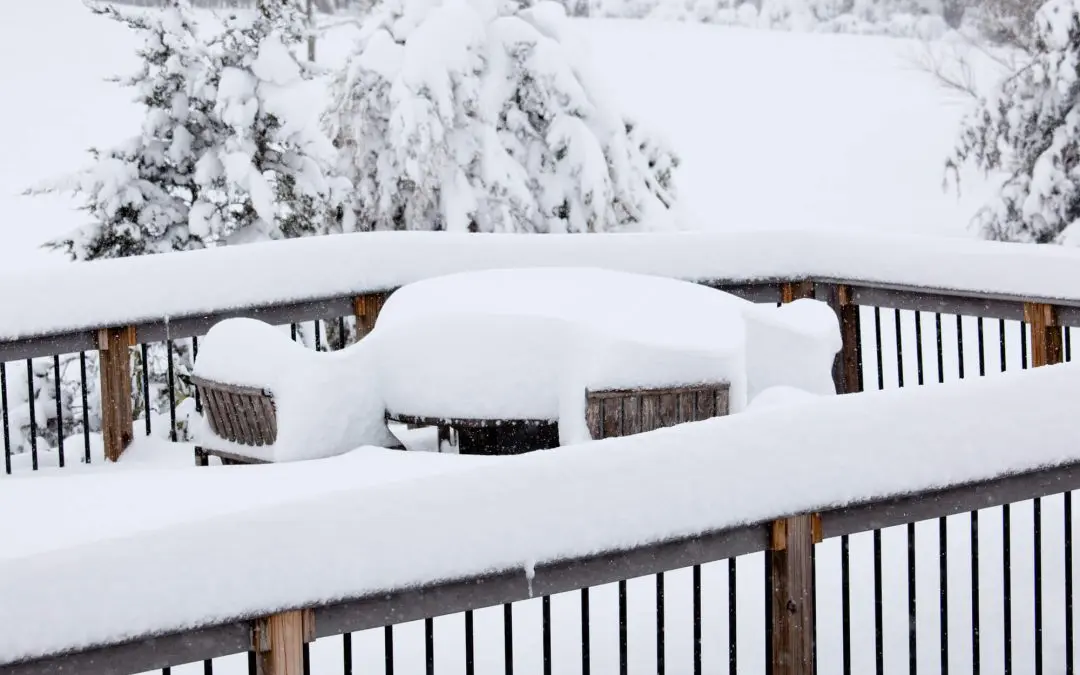As the winter season approaches, it’s essential to prepare your home and outdoor spaces for the challenges that colder temperatures, snow, and ice can bring. One often overlooked area is the deck, a valuable extension of your living space that requires special attention to withstand the harsh winter conditions. Winterizing your deck is crucial to ensure its longevity and prevent damage caused by freezing temperatures, moisture, and snow accumulation. In this guide, we’ll walk you through the steps to effectively winterize your deck and keep it in top-notch condition.
1. Clean and Inspect Before You Winterize Your Deck
Start by thoroughly cleaning your deck. Remove leaves, debris, and furniture that can’t stand the elements. Use a broom or leaf blower to clear away loose dirt and leaves. Next, inspect the deck for any signs of damage, such as loose boards, protruding nails, or rot. Addressing these issues early will prevent further damage during the winter months.
2. Seal and Stain
Applying a fresh coat of sealant or stain is crucial for protecting your deck from winter elements. Sealants create a protective barrier, preventing moisture from seeping into the wood and causing damage. Stains not only enhance the aesthetic appeal of your deck but also provide an additional layer of protection against UV rays and moisture. Choose a product designed for exterior wood and follow the manufacturer’s instructions for application.
3. Protect Furniture and Accessories
If your deck has outdoor furniture, cushions, or accessories, it’s essential to protect them from winter weather. Store cushions and fabric items indoors, or use weather-resistant covers to shield them from snow and moisture. Move lightweight furniture to a covered area or store it indoors if possible. This will prevent damage caused by freezing temperatures, snow accumulation, and ice.
4. Clear Drains and Gutters
Ensure that the drainage systems around your deck are clear of debris to prevent water from pooling and causing damage. Clear out gutters and downspouts to allow proper water flow and reduce the risk of ice dams. If water is allowed to accumulate and freeze, it can lead to structural issues and damage the integrity of your deck.
5. Use Ice Melt with Caution
While keeping your deck safe by preventing ice buildup is essential, not all ice melt products are suitable for use on wooden surfaces. Avoid products containing calcium chloride or sodium chloride, as these can damage wood and corrode metal components. Instead, opt for ice melt products labeled safe for concrete, stone, and vegetation. Apply sparingly and follow the recommended guidelines to prevent damage to your deck.
6. Elevate Planters and Decor When You Winterize Your Deck
If you have potted plants or decorative items on your deck, elevate them to prevent moisture from accumulating underneath. This simple step can protect your deck surface and prevent staining or discoloration caused by trapped water.
Winterizing your deck is a proactive approach to ensure its longevity and maintain its aesthetic appeal. By following these steps, you’ll protect your investment and create a welcoming outdoor space ready to be enjoyed once the warmer months return. Prepare your deck for winter, and you’ll reap the rewards of a well-maintained and resilient outdoor living area for years to come.
TMK Inspections provides inspection services to homebuyers and sellers in Southeast Pennsylvania. Contact us to schedule an appointment.

